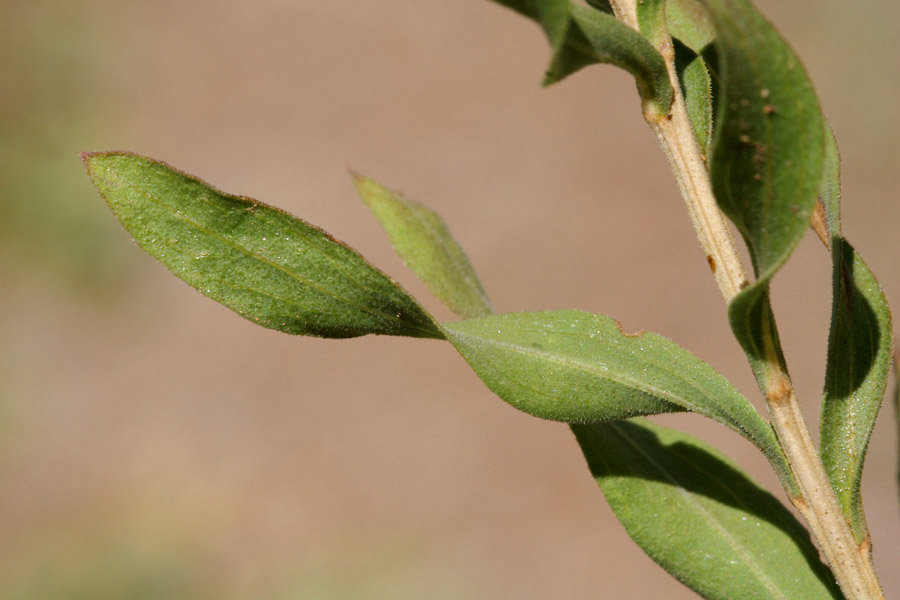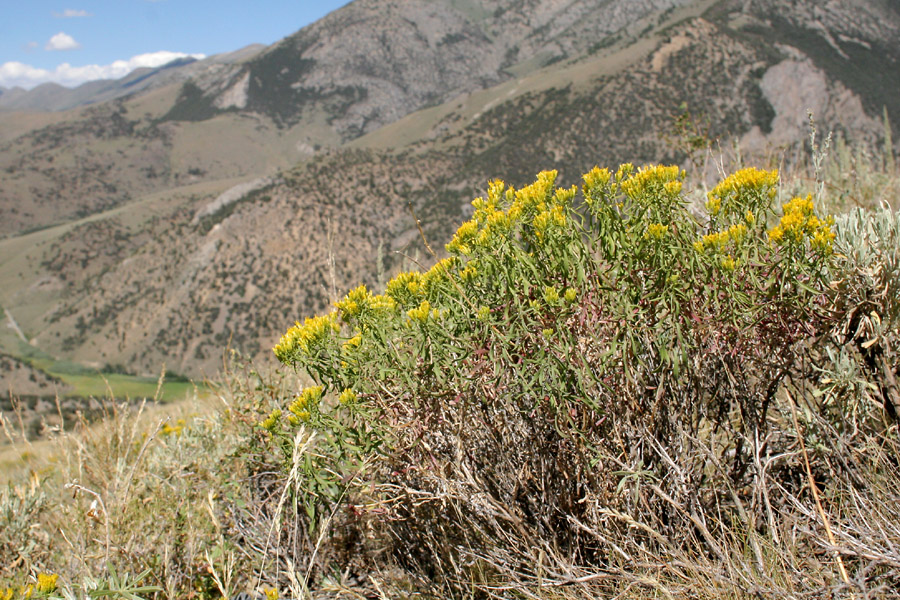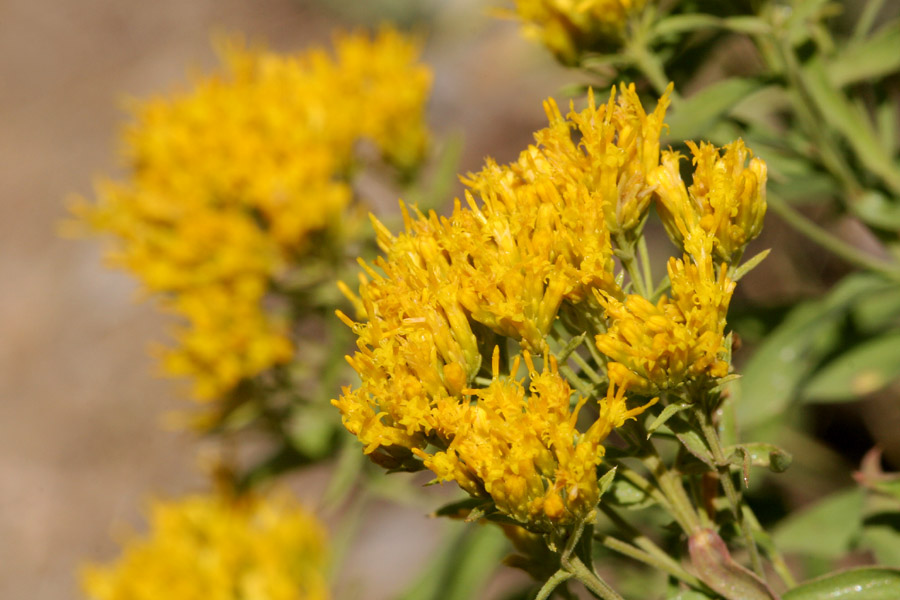Selected Plants of Navajo Rangelands
Rabbitbrush, green
Ch’ildiilyésiits’ǫ́ǫ́z
(a.k.a. yellow rabbitbrush, Douglas rabbitbrush)

Green rabbitbrush has little value as a forage species. An erect shrub, branching from near the base, with a rounded crown, 1 to 3 1/2 feet tall, it flowers July to September and reproduces from seed, and vegetatively by vigorous sprouting.
Sheep and cattle occasionally use it for browse when other feed is not available. Deer browse lightly on it in the summer and winter. Elk utilize it in the winter. It can be a somewhat weedy plant, increasing where there has been serious damage to the more desirable forage.
It quickly and aggressively invades disturbed, open sites including burns and overgrazed rangelands. People sometimes chew the roots of rabbitbrush as gum. It contains rubber, especially when growing in alkali soils.


Copyright 2018 New Mexico State University. Individual photographers retain all rights to their images. Partially funded by the Western Sustainable Agriculture Research and Education Program (westernsare.org; 435.797.2257), project EW15-023. Programs and projects supported by Western SARE are equally open to all people. NMSU is an equal opportunity/affirmative action educator and employer..
NMSU does not discriminate on the basis of age, ancestry, color, disability, gender identity, genetic information, national origin, race, religion, retaliation, serious medical condition, sex (including pregnancy), sexual orientation, spousal affiliation or protected veteran status in its programs and activities as required by equal opportunity/affirmative action regulations and laws and university policy and rules. For more information please read the NMSU Notice of Non-discrimination (opens in new window).

